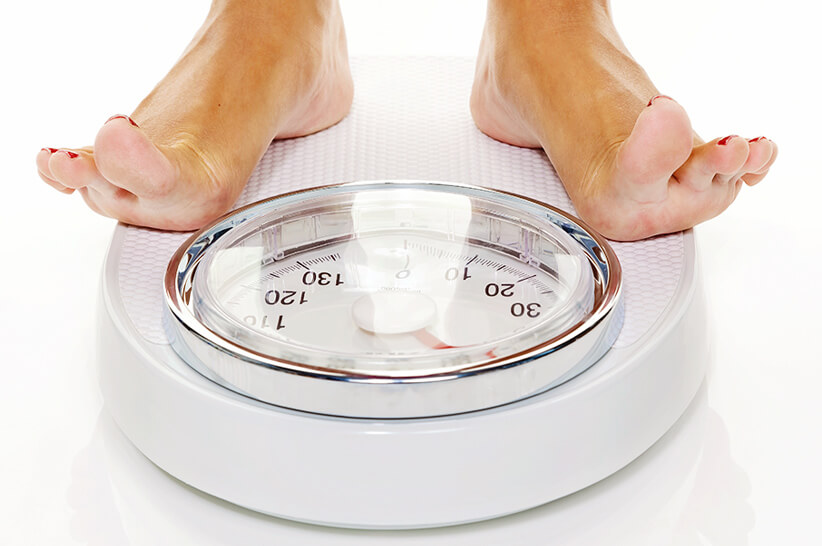The thought of doing keto and intermittent fasting can sound scary for some people, but studies show that they provide many benefits.
To understand how combining both takes your fitness to the next level, we need to define each concept.
In case you’re still thinking about following a keto diet, intermittent fasting to induce ketosis is worth trying. But if you’re already on the diet, you might want to try fasting to break a weight loss stall.
Dr. Nikola Djordjevic, medical adviser of HealthCareers, said that intermittent fasting and keto are probably the most popular eating practices that are often done together.
Here’s what you should know.
What Is Intermittent Fasting?
Intermittent fasting (IF) is an eating method in which a person cycles between having food and no food at all, within certain periods. There aren’t any specific rules as to what foods you should eat when you eat them.
For example, a popular IF method is meal skipping. In this method, you can skip your breakfast and take lunch as your first meal of the day.
There are other ways to do IF, and they include:
- One meal a day (OMAD). You consume all your calories in one meal. If this is your first time to try fasting, consider other methods as OMAD can be difficult for beginners.
- 16/8 method. This entails eating within an 8-hour period and fasting for the remaining 16 hours. Dr. Nikola Djordjevic personally recommends the 16/8 method especially when combined with keto, since it reduces meal prep time.
- Alternate-day fasting (ADF). A stricter form of IF, it involves a 36-hour fasting period, followed by a 12-hour window in which you can eat as much as you want. A study showed that healthy, non-obese adults can safely practice ADF for several months 1.
- 5:2 diet. The 5:2 diet involves eating for five days a week and limiting your calorie intake to 500-600 calories during the two remaining days.
One of the theories why fasting benefits the body is that it puts your cells under mild stress.
In effect, your cells can cope better with stress and resist disease 2.
What Is the Keto Diet?
The ketogenic diet is a low-carbohydrate, moderate-protein, and high-fat diet.
On keto, you need to restrict your carbs to 20-50 grams per day. This depletes your glycogen stores, forcing you to burn fat. When this happens, you produce an alternative fuel source called ketones.
For those who don’t know, the keto diet isn’t a fad – based on science. This diet began as a treatment for epilepsy in the 1920s 3.
Today, many people use it for weight loss and physical and mental performance.
What Are the Potential Benefits of Intermittent Fasting and Keto?
By now, you know that intermittent fasting and keto can be practiced together by individuals with specific health and fitness goals. If you’re wondering what specific benefits you can gain along the way, read on.
Helps you ease your way into ketosis
People who try fasting intermittently find that they enter ketosis sooner than if they do the keto diet alone.
So yes, fasting to induce ketosis is possible.
Remember we mentioned the keto diet being used as a treatment for seizures? Research shows that seizure control was associated not just with lower blood glucose levels, but also increased ketone levels 4.
Dr. Richard Harris, founder of Great Health and Wellness, says intermittent fasting is the quickest way to get into ketosis.
Harris adds, “While following a keto nutrition plan will also get you into ketosis, it can take a month for a person to fat-adapt to consistently stay in ketosis from nutrition alone.”
A ketogenic diet makes fasting more manageable
If achieving ketosis is your goal, intermittent fasting is a must-try strategy.
But what if you’ve been on a keto diet for quite some time now? Hayley Cimring, a registered dietician, mentions that eating a ketogenic high-fat low-carb diet will make fasting easier and more manageable.
“This is because a keto diet will help you become more fat-adapted, which will enhance your ability to perform an extended fast without feeling lethargic, depressed or unbearably hungry,” says Cimring.
Boosts fat loss
Combining keto and intermittent fasting results in fat loss. Here’s why:
A state of ketosis stimulates fat burning through a reduction in carbohydrates. This means that you now utilize your stored fat to stay energized.
Ketone bodies produced by fat breakdown are a potent fuel. They provide more energy than glucose.

In fact, supplementing with ketones can enhance physical performance 5. You’ll have more energy to push through your workouts which helps you reach your goals sooner.
Intermittent fasting, on the other hand, promotes adipose thermogenesis – a process in which your body produces heat. Thermogenesis promotes fat loss, as demonstrated by a double-blind 8-week study 6.
“Together with the fat that’s already being used up while on the keto diet, combining keto diet and fasting has the potential for bigger weight loss results,” says Melissa Nieves, LND, RD, MPH.
A recent study showed that 6 weeks of alternate-day fasting (ADF) resulted in 7.1% weight loss and 5.7% visceral fat mass loss in obese and overweight women 7.
Some people who succeed with intermittent fasting find that it curbs their appetite 8.
Improves blood glucose levels
By giving yourself a break from food consumption, you can control your blood glucose levels as well.
University of Adelaide researchers had an interesting discovery:
They asked male participants who were at risk for type 2 diabetes to limit their food intake to 9 hours daily. This “time-restricted eating strategy” normalized their fasting blood glucose 9.
Note that the participants achieved this result without changing the kind of food they ate. Because of this, the university’s associate professor Leonie Heilbronn said that this study shows that it’s possible to enjoy foods that are perceived to be “bad” as long as one eats them at the right time 9.
How much more if you combine intermittent fasting with keto?
The low-carbohydrate ketogenic diet is effective for improving blood glucose. If you have type 2 diabetes, you may even be able to reduce your medications 10.
A 2005 study showed this. 28 overweight participants with type 2 diabetes consumed less than 20 grams of carbs per day. At the same time, they reduced their diabetes medication dosages 10.
The result? Their Hemoglobin A1c (average blood glucose for the past 2-3 months) decreased 10.
Virta Health also published their 2-year clinical trial that showed the long-term impact of nutritional ketosis on type 2 diabetes 11.
Participants had improvements in their blood glucose, insulin, HbA1c, weight, blood pressure, triglyceride, liver function, and inflammation. They were also able to depend less on medication 11.
Lets you beat a weight loss plateau
Weight loss plateaus can happen to anyone who’s following a keto diet.
You lose weight continuously in the first few weeks or months. But then you notice that your progress stalls eventually.
While plateaus are normal, they can be frustrating. And they happen for various reasons like too much protein or stress in your life 12.

If you’ve never tried fasting on keto diet, now is the time to consider it. Periods of fasting reduce your overall calorie intake which leads to weight loss. Not just that, but IF may also decrease ghrelin – your hunger hormone.
Dr. Anna Cabeca chooses intermittent fasting as part of her Keto-Green program. She says that IF supports ketosis while avoiding the weight swings seen in women over 40. It’s often referred to as “rebound weight gain.”
Improves brain health
For those who are looking to boost their brain power, they’ll be surprised to know that keto with intermittent fasting can be the answer.
Ketogenic diets increase the number of mitochondria in the brain. As a result, brain cells deal with stress better. Ketones do not only serve as alternative fuel to the brain. More importantly, they provide more energy compared to glucose 13.
What about intermittent fasting?
“When you fast through a normal mealtime, the body starts to burn up your stored body fat and creates ketones to fuel your brain,” says David Jockers, DNM, DC, MS. He adds that this process gives you better mental clarity.
Based on a clinical trial at the University of Toronto, 220 non-obese adults showed improvement in their memory. This happened within 2 years of maintaining intermittent fasting 14.
Is It Safe to Combine Intermittent Fasting and Keto?
Based on the available research, yes. Most people can use them together safely.
However, Melissa Nieves, LND, RD, MPH says that people with certain health conditions should see a doctor first. She mentions the following:
- Diabetes
- Hypoglycemia
- Cardiovascular disease
- A history of eating disorders
Haley Cimring, RD adds that people should not do IF and keto together immediately. They should start with keto first, then consider IF after a few weeks.
How to Combine Intermittent Fasting and Keto Effectively?
We answer some important questions that will help you maximize IF and keto together.
How long should you fast on keto?
That depends on what your body can handle. Some people do well with simple meal skipping, while others are able to go longer without food. We recommend going over the different IF methods and starting with the easiest.
Melissa Nieves, LND, RD, MPH adds, “You need to see which one you are able to handle better with the least amount of negative effects as possible. Be very attuned to your body and how it’s reacting to these methods, in order to determine what’s best for you.”
Can you drink water during intermittent fasting?
Absolutely. Water is essential to your body. It helps you feel less hungry and keeps your body functioning normally. The key is to stick to water and non-caloric beverages. This maintains the fasting state.
Should you test your ketone levels?
Yes. You still need to test your ketones whether you’re fasting or not – as long as you’re following a keto diet. This ensures that you stay in ketosis. You can test using a urine strip or blood ketone meter (for more accurate results).
A person can practice keto and IF separately. But combining both? It brings about many benefits. This is especially true for those who want to elevate their health. However, someone with a medical condition should always speak with their doctor first.
Takeaways
Studies show how effective both methods can be for getting into ketosis faster, increased fat loss, achieving healthy blood glucose levels, and more.
Know what you can expect before you get started. When you’re just about to try keto, make sure that you know its temporary side effects. Learn about the different IF methods and choose the one that works for you.










![Juicing for Weight Loss: Everything You Need to Know [Plus Recipes]](/wp-content/uploads/2019/08/Juicing-for-Weight-featured-image.jpg)








